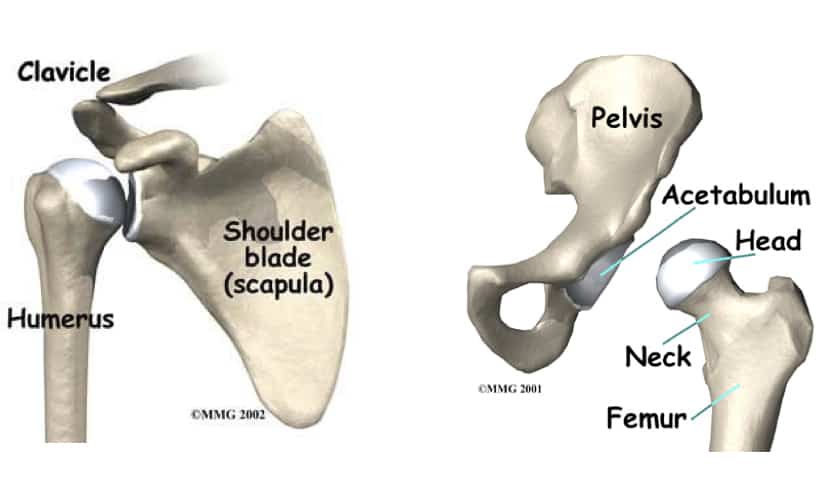
Ball and Sockets
The shoulder and hip are ball-and-socket joints. Their usage, however, often gets thrown off by the hinge joints separating the thick and double bones that make up our limbs. The knees and elbows tend do most of the grunt work when moving the arms and legs. To eliminate this ‘hinge-joint takeover’, keep them locked or extended so the shoulders and hips are forced to pick up the slack.
To demonstrate this concept, let’s look at a simple arm step up exercise:
With the elbows locked out, the shoulders have to create the movement. When the elbows are allowed to flex, the shoulders hardly need to move.
The same approach can be translated to the hips:
Since the hips are less mobile than the shoulders (structurally and anatomically) this will be tougher than the shoulder movement. To compensate, your hips will want to shift laterally. Keep the step height small and try not to let this happen.
We hardly ever move our legs without using our knees. A lack of application means a lack of brain patterning, and a lack of motor skill/coordination means hip-only movement will be awkward and difficult. It’s normal and ok. It’s learning.
Similarly, we can use the knee lock to train hip movement in the sagittal or rotational plane:
The knee will REALLY want to bend (slightly) when picking the foot off the floor.
If unable to get much movement, or to improve END RANGE of motion, slide the foot across the floor. This keeps the motion closed-chain (attached to an implement or surface), using the ground as a helper to grab and pull the hip:
Crossing in front has toes lead the heel. The toes are on the anterior portion of the leg and drive the anterior fascia for an anterior movement. Crossing behind has the heel leads the toes. The heel guides the posterior portion chain of the leg in a posterior or backwards movement.
Ball-and-socket joints allow for 360-degrees of rotation. Hips, being weight bearing, encompass more of a lateral circle, while shoulders, designed to reach and grab, cover more of a vertical circle.
CARs (controlled articular rotations) from Functional Range Conditioning are an open-chain (limbs dangling in space) exercise in rotary control. Bending the elbow or knee shortens the lever an makes the articulation easier to control:
The bent arm version is great for folks with bicep and anterior shoulder pain. The direction of the elbow hinge minimizes the use of these areas and allows for rotational practice with minimal issue .
The longer lever of the straight leg makes it much harder to keep the torso upright when revolving around the hip socket. Try to keep the moving foot positioning the same as in the bent-leg version to ensure the hip is actually rotating within it’s socket rather than swiveling around it.
Scapular push ups and scapular/active hangs are based on the same, “no elbow-all shoulder” premise, using the muscles of the shoulder blade to assist suck back into the socket — or joint centration. Centering the ball in the socket allows for optimal positioning and maximal motion in frontal (front to back) and transverse (up and down) planes.
TO REVIEW:
- The knees and elbows take on the brunt of our limb movements
- To put more emphasis on the hips and shoulders, perform movements with the hinge joints locked out
- The hips and shoulders can rotate in all three planes of motion
- To increase range of motion, start with closed-chain movements and progress to open-chain movements.
- The shoulder socket is tied to movements of the shoulder blade



